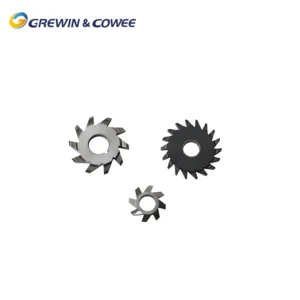Spis treści
Dźwignia kolankowaCarbide Blade for Cutting Steel
When it comes to cutting steel, selecting the right tools is essential for achieving smooth, efficient results. One of the most important tools in this process is the carbide blade for cutting steel. These specialized blades are designed to withstand the rigors of metal cutting, delivering precision and longevity. But with various options available on the market, how do you choose the right carbide blade for your needs? In this article, we will explore key factors you should consider when making your selection, ensuring your cutting projects are both efficient and effective.
Zrozumienie ostrzy węglikowych
Before diving into the selection process, it’s essential to understand what a carbide blade is and why it is crucial for cutting steel. Carbide blades are made from tungsten carbide, a tough material that offers excellent resistance to wear and heat. Unlike standard steel blades, which can quickly dull when cutting through tough metals like steel, carbide blades maintain their sharpness for longer periods, allowing for cleaner cuts and less frequent replacements. This durability translates into cost savings and improved productivity, making them a preferred choice among professionals and DIY enthusiasts alike.
Key Factors to Consider
1. Blade Type
Different applications require different types of carbide blades for cutting steel. For example, circular blades are ideal for cross-cutting and ripping, while band saw blades are great for cutting materials of varying thicknesses. If you’re doing precision work, a fine-toothed blade may be necessary to achieve smooth edges. Conversely, thicker blades with fewer teeth might be better for making rough cuts quickly.
**Example**: A woodworker trying to cut steel reinforcements for furniture assembly might opt for a fine-toothed carbide blade to ensure the cuts are clean and precise, preventing any jagged edges that could affect the final aesthetic of the piece.
2. Tooth Count
The tooth count on a carbide blade is crucial and impacts both cutting speed and finishing quality. A blade with a lower tooth count will generally remove material faster but can leave a rougher edge. Conversely, a blade with a higher tooth count will provide a smoother finish but may require more cuts and take longer to complete the job.
**Example**: If you’re operating a metal fabrication shop and need to perform repetitive cuts on steel plates, using a carbide blade with a higher tooth count would result in smooth, finished edges that may require less sanding or secondary finishing.
3. Blade Size
The size of the carbide blade for cutting steel is another important factor. The diameter of the blade determines the depth of the cut you can achieve. Larger blades can handle thicker materials, while smaller blades are more suitable for detailed, intricate cuts. Choosing the right size is critical to ensuring your tool can handle the tasks at hand without straining the equipment or causing safety hazards.
**Example**: If you’re tasked with cutting large steel sheets for structural frameworks, a larger diameter carbide blade will be beneficial, enabling you to make deeper cuts quickly and efficiently.
4. Coatings and Treatments
Some carbide blades come with additional coatings designed to enhance performance. For instance, blades with a non-stick coating can reduce friction, minimizing heat build-up and prolonging the life of the blade. Other coatings can protect against corrosion, which is especially useful when cutting steel in humid environments.
**Example**: In a shipyard where metal components are frequently exposed to moisture, a carbide blade with a protective coating will outlast standard blades, ensuring you can work efficiently without the worry of frequent replacements.
5. Machine Compatibility
Finally, when selecting a carbide blade for cutting steel, consider the compatibility with your existing machinery. Each machine has specific requirements regarding the type and size of the blade it can accommodate. Ensuring that the blade you select fits correctly with your saw is crucial for both safety and efficiency.
**Example**: If you own a table saw designed for woodworking but decide to use a carbide blade for cutting steel, the dimensions and configuration must align perfectly. A wrong fit can lead to accidents or improper cuts that compromise the whole project.
Common Applications
Carbide blades for cutting steel have a wide range of applications across various industries. They are commonly used in construction for structural steel cutting, in automotive for frame repairs, and in manufacturing processes for creating precise metal components. These blades are also favored in the metalworking industry for their efficiency and effectiveness in producing high-quality cuts.
Wniosek
Choosing the right carbide blade for cutting steel is a decision that can significantly impact your projects. By considering factors like the type of blade, tooth count, size, coatings, and machine compatibility, you can ensure you make an informed choice. Whether you’re a passionate DIYer or a professional contractor, investing in the right carbide blade for cutting steel not only saves you time and money, but it also improves the quality of your work.
In summary, the carbide blade for cutting steel is an invaluable tool that allows for precision and efficiency. Armed with the right knowledge, you can tackle even the toughest steel cutting tasks with confidence, ultimately elevating your craftsmanship and productivity. So, the next time you reach for a cutting tool, remember these considerations and choose wisely—your projects will thank you.
